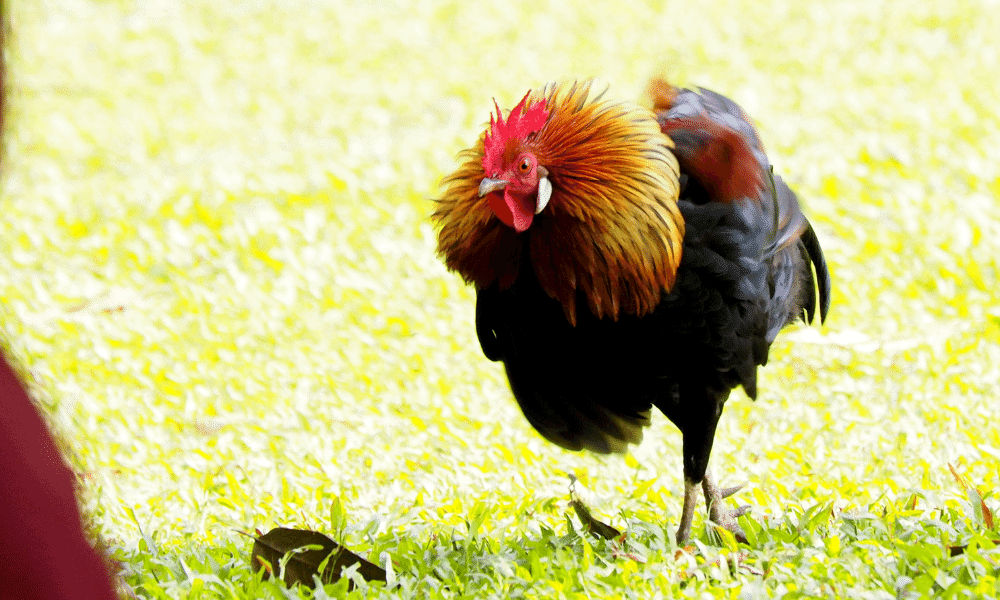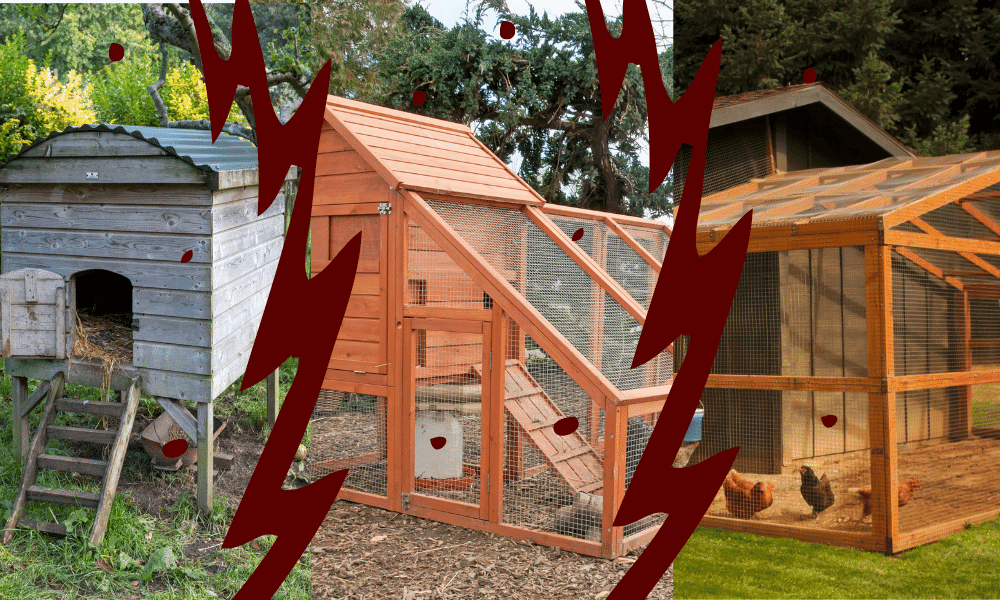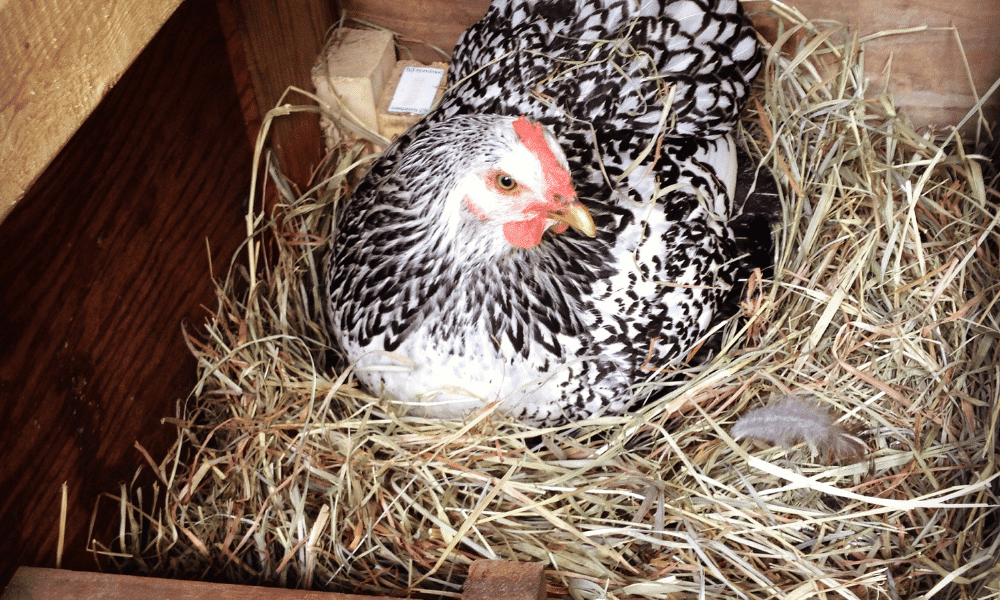When it comes to housing your chickens, size does matter. For new owners and experienced backyard chicken owners who are adding more chickens to their flock, the size of your chicken coop plays a huuuuuge part in the well-being of your chickens.
Just like with us humans, we need space to feel comfortable. Chickens are no different, and there are several issues that can come from a coop being too small.
Here we go through what size chicken coop you should have for a flock of 4, 6, 8, 10, 20, or even 50 chickens, and why choosing the right sized coop is so important.
Contents
Why Is Choosing the Right Coop Size Important?
Choosing the right coop size, along with enclosure space and the number of nesting boxes per chicken, are all essential for the well-being of your chooks.
When it comes to coop size, a coop too small will see some very real effects on your chickens, from increased aggression, decreased egg production, and potential sickness from increased ammonia levels coming from your chicken’s waste.
Here is why it’s so important to have the right sized coop for your flock.
Aggression Amongst Chickens

One very real effect of limited coop space for your chickens is an increase in aggression, particularly toward the lower end of the pecking order.
Chickens tend to fight when they feel like they have to compete for space on perches or on the floor. The most common behavior when that occurs is pecking to fight for the limited space and resources.
Once the pecking starts between some of your chickens, it can be pretty difficult to stop it from spreading between the rest of the flock.
This is especially true for those that start with a coop that’s the right size, but then end up adding more chickens to their flock. The newly added chickens are normally at the lower end of the pecking order, and the limited space makes it too easy for the top chickens to bully them.
Decreased Egg Production
Undersized coops can lead to stress among your flock. If your chickens are stressed, their egg production won’t be at its peak. Crowded coops can often become too hot in the summer too!
The same can be said if there aren’t enough nesting boxes in your coop, as your chickens will have to compete to take the available boxes. This can be even worse if you’ve got a few broody hens occupying them too!
This can also lead to your chickens laying eggs elsewhere, making a nest somewhere while they are free-ranging. This can lead to an increase in predators, and if it goes unnoticed you will be missing out on some freshly laid eggs!
High Ammonia Levels
Any chicken owner will tell you, these things are constantly eating and constantly producing waste. Although it’s a small price to pay to own such amazing creatures, if you do have a small coop it can quickly become a bacterial nightmare.
Chicken waste contains ammonia and high levels of ammonia in the coop can lead to all sorts of problems with your flock’s health. This ranges from eating disorders, inactivity, to respiratory issues. This is a chain reaction of effects and can lead to underweight chickens which will lay less and be more prone to disease or illness.
Aside from the health issues, ammonia absolutely stinks, which makes it that much more unpleasant when you have to clean it and clean it more often!
Downsides Of A Coop That’s Too Big?
The consequences of a coop that’s too large are much more bearable than a coop that’s too small. Plus, we crazy chicken owners will say that a coop too large means you can easily get more chickens!
Nonetheless, a chicken coop that’s too big does still have some issues. An overly large coop can actually be too cold for your chickens in winter. All of the unoccupied space leaves more room for cold air.
Furthermore, a larger coop will also take more energy and effort to clean. A perfect size coop will attract just as much mess but much less time and effort to clean.
What Size Chicken Coop Do You Need?

To avoid the consequences of both an undersized and oversized coop, here’s a simple but complete guide to what size chicken coop you’ll need for any size flock.
As a general rule of thumb, you will need 4 square ft. of space per chicken for any medium to large breed, and 2 square ft. of space per chicken for any bantam breed.
Medium to large breeds includes any “standard” size chicken, from ISA Brown, Golden Comets, Rhode Island Reds, Buff Orpingtons, Plymouth Rocks, Leghorn, etc. The largest being Brahma roosters.
Bantam breeds are those such as Silkie, Sebright, etc.
This accounts for whether or not you have a rooster, your chickens free-ranging, and allows for enough room to also fit nesting boxes and roosting bars.
Coop Size Needed For 1-4 Chickens
A small flock of 3-4 chickens is often the most common size for new chicken owners. A small tip here would be really to consider if you’ll be wanting any more chickens in the future – as if you do it could be a good idea to get a little larger space!
Otherwise, for any small flock size between 1-4 chickens, you’ll want at least 16 sq ft. of space in the coop for medium to large breeds, and 8 sq ft. of space for bantam breeds.
Coop Size Needed For 6 Chickens
A small to medium flock of 6 chickens, whether you’ve got a rooster or not, will require you to have a coop size of at least 24 sq ft for normal-sized chickens, and 12 sq ft. for any bantam breeds.
Coop Size Needed For 8 Chickens
A flock of 8 chickens is no longer considered a small flock! Whether they are all hens or you have a mix, you’ll want at least 32 sq ft. of internal space for normal-sized chickens, and 16 sq ft. of space for bantam chickens.
Coop Size Needed For 10 Chickens
A flock of 10 chickens is nearing the limit for suburban areas, but is very common for more rural areas, the more the merrier right?
For 10 normal-sized chickens, you’ll want to have at least 40 sq ft. of space in the coop, and 20 sq ft. of space for bantam breeds. This also accounts for you to put three or four nesting boxes and roosting bars too.
Coop Size Needed For 20 Chickens
A flock of 20 chickens sounds like a dream. It’s that size where it’s no longer just a hobby, but a lifestyle. At this point, you’ll certainly struggle to eat all their eggs, but your whole family and friends will be thanking you for the ages.
A flock of 20 medium to large-sized chickens requires at least 80 sq ft. of space in the coop, and 40 sq ft. of space for bantam breeds.
Coop Size Needed For 50 Chickens
With the flock size of 50 chickens, you’ve gone from a simple backyard chicken owner to a full-blown chicken operation. Fifty chickens is often thought of as a small farm and so you’ll want adequate space for your chooks to lessen the stress on you and your chickens alike.
A flock of 50 chickens requires at least 200 sq ft. of space in the coop for any normal-sized chickens, and only 100 sq ft. of space if you house bantam breeds.
If you have a mixed flock you could look at any size between 100-200 sq ft. depending on how many chickens of each breed you house.
Other Important Features To Include In The Chicken Coop
Aside from enough space in the coop for chickens to perform their normal chicken behaviors, the above calculations also allow room for enough nesting boxes for your flock and appropriate-sized roosting bars.
You’ll also want to consider how large to make your chickens run or pen too, to make sure they have enough space outside the coop.
Nesting Boxes

Having enough nesting boxes in your coop is essential for your chooks’ wellbeing, making sure they have enough space to lay their eggs.
For example, if you have too few nesting boxes and they all become occupied by broody hens, or hens trying to lay an egg, then your chicken is more likely to “hold it in”, or try and find somewhere else safe and comfortable to lay.
This is not a good habit to encourage in your chickens, as ultimately you’ll end up with fewer eggs, and more stressed chickens.
So, if you have a choice, you should always provide more nesting boxes than fewer.
There are many benefits of putting your nesting boxes off the ground. Placing nesting boxes at a height of around 18 inches will make chickens feel a lot safer, will reduce moisture content, and they won’t need ramps to reach them — they’ll just jump up!
Roosting Bars
Roosting bars are a chicken’s preferred bed of choice. Offering not only the height of the ground, which makes them feel safe but the actual bars and more comfortable for your chicken’s feet to perch on.
The wild chickens of Hawaii sleep in trees, except when they’re laying eggs. This is just any domesticated backyard chicken. The nesting box is for laying eggs and hatching, and the roosting bars are for sleeping.
Roosting bars come in various shapes and sizes, but any that are made from wood, are round, and are in some kind of ladder arrangement, will be perfect for your chickens.
Enclosed Run Or Chicken Pen
A coop is where the chickens sleep and lay their eggs. A chicken run, sometimes referred to as a pen, is a wired or protected enclosed space that usually is attached to the coop.
Some chicken owners simply provide a chicken coop for their chickens, which can be OK particularly if you don’t live where there are many predators.
But, by providing a well-constructed and safe pen for your chickens you will offer them time outside their coop, while still protected from predators. This encourages activity in your chickens, allows them to feel safe outside when they’re not free-ranging and foraging in the yard, and is a great place for their feeders and waters too.
For more information, check out how much land space you’ll need per chicken.
Conclusion
So, when it comes to choosing your chicken coop size, bigger tends to be better.
This is because a chicken coop that’s too small can see increased aggression, decreased egg production, and more hassle to keep clean and clear from ammonia.
When it comes to the actual size, to be safe you should offer 4 square ft. of space per chicken for standard chickens or 2 square ft. of space per bantam chicken. This allows for sufficient space for a nesting box and roosting bars too, without being unnecessarily large.
These same guidelines can be used for raising ducks too, as they will get noisy at night if they don’t have enough space!
